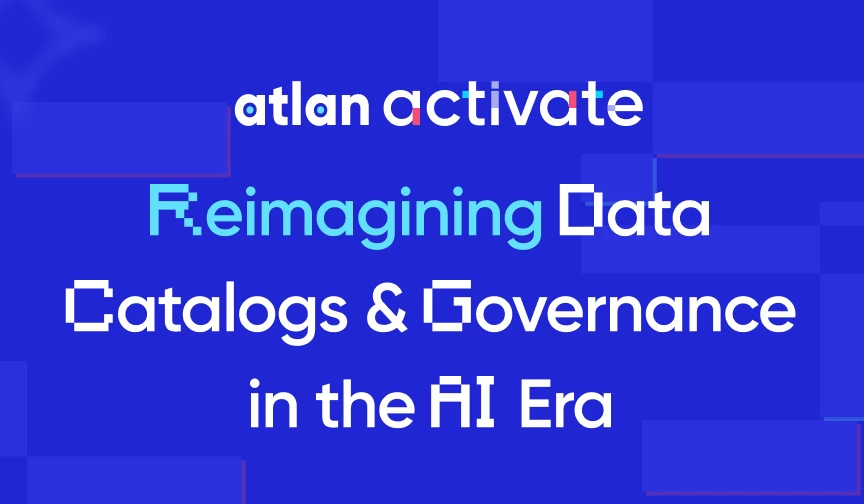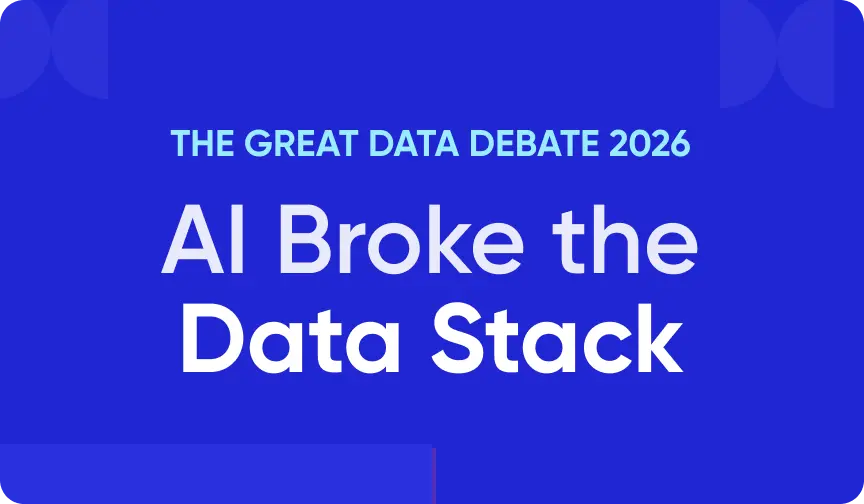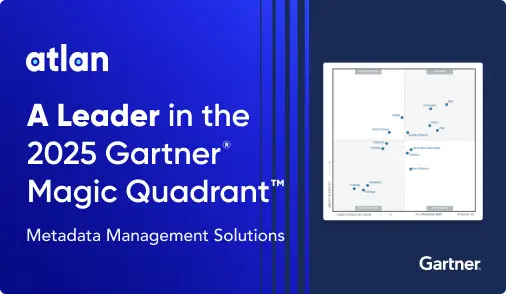AI for Compliance Monitoring in Finance: Future-Proofing Your Data Estate for Change

Last Updated on: April 21st, 2025 | 11 min read
Unlock Your Data's Potential With Atlan

AI for compliance monitoring in finance uses technologies like machine learning, NLP, and automation to streamline regulatory processes, detect risks, and ensure ongoing compliance. This enables financial institutions to scale efforts, reduce manual workload, and improve accuracy while staying aligned with evolving regulations.
Financial institutions face mounting regulatory pressure and rising compliance costs, with compliance spending reaching $270 billion annually in 2020, according to an Accenture study. In such an environment, ensuring data compliance management that adapts to changing regulatory and tech landscapes requires an AI-powered approach.
Using AI for compliance monitoring in finance can reduce manual effort, improve accuracy, scale compliance, and lower costs. In this article, we’ll look at the evolution of AI in compliance, its applications, and business benefits. We’ll also discuss the challenges and explore the role of a unified control plane.
Table of Contents
Permalink to “Table of Contents”- Using AI for compliance monitoring in finance: An overview
- The evolution of automation and AI in finance
- AI for compliance monitoring in finance: Top use cases
- Key barriers to successful AI implementations for compliance monitoring in finance
- AI for compliance monitoring in finance: The role of metadata and embedded governance
- AI for compliance monitoring in finance: The key to future-proofing for change
- FAQ’s on AI for Compliance Monitoring in Finance
Using AI for compliance monitoring in finance: An overview
Permalink to “Using AI for compliance monitoring in finance: An overview”AI for compliance monitoring in finance encompasses the integration of artificial intelligence technologies—specifically machine learning, natural language processing, automation, and generative AI—to establish, enforce, and monitor regulatory compliance.
It can involve automated rule checks and risk detection, intelligent alerts and workflows for discovering compliance gaps or policy violations, and automated audit reports, among other things.
“AI is a game changer in ITES [information technology enabled services]. Effective AI governance models will help data protection, compliance and regulatory approval and business values.” - Gartner Peer Community insights on AI governance
AI reduces the risk of human error in compliance processes, improving accuracy and efficiency. For example, BNY Mellon, in collaboration with Google Cloud, developed an AI-powered prediction model that can predict approximately 40% of settlement failures in Fed-eligible securities with 90% accuracy.
Another advantage of using AI for compliance monitoring in finance is cost optimization. By automating compliance processes, AI reduces operational costs. For example, McKinsey estimates that AI technologies could potentially deliver up to $1 trillion of additional value each year.
Before exploring the nuances of using AI for compliance monitoring in finance and its top use cases, let’s briefly look at the evolution of its role in the finance landscape.
The evolution of automation and AI in finance
Permalink to “The evolution of automation and AI in finance”“A.I. has been integral to the financial industry for at least a decade and—depending on how you define artificial intelligence—arguably much longer.” - Fortune
Early 1970s to 1990: Rule-based systems
Permalink to “Early 1970s to 1990: Rule-based systems”The first wave of automation in finance emerged with rule-based systems – simple, static, programmatic instructions. Examples include ATMs (Automated Teller Machines), which came into existence in the early 1970s, and index funds – the first one was unveiled in 1975.
Then came the use of algorithms for financial planning:
- 1982: PlanPower, an AI program for tax and financial advice, which tailored financial plans to individuals with incomes over $75,000.
- 1987: Personal Financial Planning System (PFPS) by Chase Lincoln First Bank to offer ‘affordable and expert financial advice’ for households with incomes ranging from $25,000 to $150,000 and upwards.
- 1989: FICO Score, the first broad-based consumer credit score, which cut the wait time for credit from days to minutes
1990 to early 2000s: Predictive analytics
Permalink to “1990 to early 2000s: Predictive analytics”The next wave of AI and ML in finance focused on identifying data patterns and predicting potential security risks. For example, in 1994, the FinCEN Artificial Intelligence System (FAIS) was set up to detect potential money laundering incidents. It also started publishing SARS reports containing a detailed analysis of suspicious activity patterns and other financial intelligence insights.
Late 2000s to 2020: More advanced AI and ML implementations
Permalink to “Late 2000s to 2020: More advanced AI and ML implementations”In the late 2000s and early 2010s, as computer processing power grew and data storage became scalable with the cloud, new AI and ML implementations in regtech (regulatory technology) started cropping up. Applications include process automation, anti-money laundering, fraud prevention, risk management, and stress testing, among others.
A prominent example is the launch of J.P. Morgan’s COIN (Contract Intelligence), an automated document review program, in 2017. COIN would review in seconds the number of contracts that previously took lawyers over 360,000 man-hours.
By 2018, many financial institutions had started announcing the development of recommendation systems. For instance, Bank of America launched Erica, an AI-powered virtual assistant, in 2018 to offer personalized financial advice, transaction support, and savings recommendations.
Late 2022 to present: Generative AI
Permalink to “Late 2022 to present: Generative AI”More recently, the rise of genAI (generative AI) has introduced powerful new possibilities in compliance monitoring. Unlike traditional AI, genAI can generate content—such as reports, summaries, and policies—based on the inherent metadata. This shift is transforming how financial institutions approach documentation, regulatory reporting, and even customer interactions.
GenAI has also spurred compliance-specific use cases in anti-money laundering (AML), fraud detection, anomaly detection, and risk management.
For example, Mastercard has achieved a reduction of up to 200% in false positives when detecting fraudulent transactions on potentially compromised cards, leveraging its generative AI-powered predictive technology.
Meanwhile, Barclays uses AI to detect fraud by analyzing behavior patterns. Transactions matching a customer’s usual behavior trigger fewer alerts, while deviations from their norm—even if common for others—are flagged as potentially fraudulent.
AI for compliance monitoring in finance: Top use cases
Permalink to “AI for compliance monitoring in finance: Top use cases”AI for compliance monitoring in finance encompasses a wide range of applications, including (but not limited to):
- Automating Suspicious Activity Reports (SARs) and compliance reports
- Using Natural Language Processing (NLP) for summarizing and interpreting legal and regulatory documents
- Drafting and reviewing policies that align with multiple regulatory frameworks
- Creating intelligent workflows for various aspects of data governance and compliance
- Powering AI chatbots for compliance assistance and real-time guidance on regulatory requirements
Key barriers to successful AI implementations for compliance monitoring in finance
Permalink to “Key barriers to successful AI implementations for compliance monitoring in finance”The use of AI for compliance monitoring in finance presents several challenges, such as:
- Bias in AI model outcomes based on the data they are trained on, leading to unfair or inaccurate outcomes
- Explainability issues (AI models being deemed ‘black boxes’) make it tougher to explain AI-powered decisions to regulators
- Concerns about data privacy and security – Stanford student Kevin Liu tricked Microsoft Bing Chat into revealing its programming using a prompt injection attack
- Integration with legacy systems and a disparate data ecosystem
- High initial implementation costs – Goldman Sachs predicts heavy investments in technology, talent, and process redesign, totaling $200 billion globally by 2025
- Tighter regulations and emerging AI-specific policies – the EU AI Act, the Colorado AI Act, and the TAG Act – in addition to existing data protection regulations (GDPR, BCBS 239, etc.)
- Ineffective metadata management practices
AI for compliance monitoring in finance: The role of metadata and embedded governance
Permalink to “AI for compliance monitoring in finance: The role of metadata and embedded governance”To make AI effective for compliance in finance, organizations need a foundation of governed, contextual, and accessible data. This, in turn, requires active metadata management, embedded governance, and a unified control plane—working together to create a connected, intelligent data ecosystem built for AI use cases.
How active metadata helps in ensuring data-readiness
Permalink to “How active metadata helps in ensuring data-readiness”Fundamental to ensuring the success of the numerous use cases discussed earlier is active metadata management.
Unlike traditional metadata, which is static and siloed, active metadata is dynamic, contextual, and actionable. It continuously scans systems, detects patterns in data usage, and sends enriched insights back into tools across the data stack.
This bi-directional flow turns metadata into a powerful engine for real-time compliance monitoring and intelligent automation.
Here’s how Gartner puts it – active metadata is where metadata isn’t just collected but analyzed and activated to drive automation and insights. This is the crux of ensuring data-readiness for AI.
A key takeaway from the 2025 Gartner Summit on the link between active metadata and AI was from Gartner Analyst Ehtisham Zaidi:
“If data readiness is the goal, active metadata is the engine that powers it.”
Gartner Sr Director Melody Chien reinforced this by calling metadata ‘the crucial matchmaker’ facilitating the match between questions and unstructured data. So, without proper metadata, your AI systems end up “mis-matching and mis-answering”—precisely the hallucination problems plaguing many early AI implementations.
So, for AI in financial compliance monitoring to be effective, banks must make active metadata management a priority.
For example, North, a leading payments solution provider processing over $100 billion in annual transactions, uses active metadata to secure 225,000 data assets, ensure compliance, and enable self-service analytics with end-to-end visibility.
Also, read → The role of metadata management in enterprise AI
The role of embedded governance in operationalizing AI-powered compliance
Permalink to “The role of embedded governance in operationalizing AI-powered compliance”While active metadata ensures data readiness, it’s embedded governance that makes compliance actionable at scale.
Embedded governance integrates compliance, security, and quality controls directly into every system, process and workflow, ensuring consistent policy compliance — without slowing teams down or restricting access to trusted data.
This is vital for scaling AI use cases in a rapidly evolving, increasingly stringent regulatory environment.
How a unified control plane brings it all together
Permalink to “How a unified control plane brings it all together”To truly unify AI, metadata, and governance, organizations need a central hub — a unified control plane. This unified control plane integrates data, metadata, and AI across the enterprise, enabling consolidated compliance monitoring.
It collects and manages metadata from all the data ecosystem components via their metadata layer and enables two-way communication between the metadata layer and the control plane.
Such a control plane lays the foundation for governing all data assets from a central place and providing a singular view of data across your data ecosystem, thereby building trust and setting the stage for AI applications.
Core capabilities of a unified control plane for data, metadata and AI
Permalink to “Core capabilities of a unified control plane for data, metadata and AI”As mentioned earlier, organizations need a unified control plane that integrates data, metadata, and AI capabilities to effectively implement AI-driven compliance monitoring. Atlan is an example of a unified control plane for data, metadata and AI, offering capabilities such as:
- Centralization of policies to access data assets using Atlan’s Policy Center
- Governance by exception, using proactive alerting based on compliance violations
- AI-assisted policy creation for your data assets
- Intelligent automation to auto-classify sensitive data, certify data assets, get real-time alerts for critical issues, automatically update documentation, and more
- Cross-system column-level data lineage to provide a single pane of glass that helps in understanding how data flows in your ecosystem
- Automatic propagation of data classification tags with bi-directional tag sync for platforms like Snowflake
- A business glossary that brings context to where the data engineers and analysts do their work
For example, Tide, a UK-based digital bank with nearly 500,000 small business customers, used Atlan’s Playbooks to automate GDPR’s Right to Erasure compliance. By identifying, tagging, and securing personal data, Tide reduced a 50-day manual process to just hours, ensuring accurate and auditable documentation.
AI for compliance monitoring in finance: The key to future-proofing for change
Permalink to “AI for compliance monitoring in finance: The key to future-proofing for change”As the regulatory landscape grows more complex and globalized, AI presents a clear path forward—offering financial institutions the ability to automate compliance, detect risks proactively, and significantly reduce operational overhead.
However, for AI to truly deliver on this promise, it must be built on a foundation of active metadata and embedded governance.
Active metadata ensures that data is discoverable, trustworthy, and AI-ready—driving real-time insights and intelligent automation. Embedded governance, meanwhile, integrates compliance and security into every system and workflow, making governance seamless rather than siloed.
Together, they power a unified control plane—a central layer where data, metadata, and AI converge to drive scalable, resilient, and transparent compliance.
Investing in AI-powered compliance monitoring is essential to meet current regulations and build a future-proof, scalable, and intelligent compliance ecosystem.
FAQ’s on AI for Compliance Monitoring in Finance
Permalink to “FAQ’s on AI for Compliance Monitoring in Finance”1. What is AI for compliance monitoring in finance?
Permalink to “1. What is AI for compliance monitoring in finance?”AI for compliance monitoring uses automation, AI, ML and NLP to scale compliance efforts by detecting risks, automating audits, and enforcing regulatory policies, among others.
2. How does AI improve financial compliance monitoring?
Permalink to “2. How does AI improve financial compliance monitoring?”AI reduces manual work, increases accuracy, scales compliance efforts, and lowers operational costs.
3. How does AI help future-proof compliance?
Permalink to “3. How does AI help future-proof compliance?”By automating compliance processes and adapting to evolving regulations, AI creates a resilient, scalable compliance framework.
4. How has AI evolved in the financial industry?
Permalink to “4. How has AI evolved in the financial industry?”AI in finance has evolved from rule-based systems and credit scoring to advanced machine learning, generative AI, and predictive compliance. It now powers everything from fraud detection to personalized financial advice.
5. What are some use cases of AI for compliance monitoring in finance?
Permalink to “5. What are some use cases of AI for compliance monitoring in finance?”Key use cases of AI for compliance monitoring in finance include (but aren’t limited to) fraud detection, AML, regulatory reporting, auto-classification of sensitive data, policy creation, and AI chatbots for compliance assistance.
6. What challenges do financial institutions face when implementing AI for compliance?
Permalink to “6. What challenges do financial institutions face when implementing AI for compliance?”Challenges include data privacy concerns, integration with legacy systems, regulatory complexity, and metadata management gaps.
7. What role does active metadata play in AI accuracy?
Permalink to “7. What role does active metadata play in AI accuracy?”Active metadata provides context, traceability, and real-time insights—ensuring AI systems access the right data and generate accurate, reliable outputs. Without it, AI models risk misinterpretation and flawed decisions.
8. Why is embedded governance essential for AI use cases in finance?
Permalink to “8. Why is embedded governance essential for AI use cases in finance?”Embedded governance ensures compliance, security, and data quality are built into every AI workflow—helping banks scale AI responsibly while staying aligned with regulatory standards.
9. How does a unified control plane help in AI-driven compliance?
Permalink to “9. How does a unified control plane help in AI-driven compliance?”A unified control plane connects data, metadata, and AI across systems—enabling centralized policy enforcement, monitoring, and automation.
10. Can you give examples of AI in action in financial institutions?
Permalink to “10. Can you give examples of AI in action in financial institutions?”Several financial institutions are successfully using AI for compliance and risk management:
- Tide, a UK-based digital bank, used Atlan’s automation tools to reduce a 50-day GDPR compliance task to just hours.
- Mastercard uses generative AI to detect fraudulent transactions, reducing false positives by up to 200%.
- North, a leading payments provider processing over $100B annually, uses active metadata to secure 225,000+ data assets, streamline compliance, and power self-service analytics with full visibility.
Share this article
Atlan is the next-generation platform for data and AI governance. It is a control plane that stitches together a business's disparate data infrastructure, cataloging and enriching data with business context and security.
AI for compliance monitoring in finance: Related reads
Permalink to “AI for compliance monitoring in finance: Related reads”- Data Compliance Management in 2025
- Financial Data Governance: Strategies, Trends, Best Practices
- Data Governance & Business Intelligence: Why Their Integration Matters and How It is Crucial for Business Success?
- What is Data Governance? Its Importance, Principles & How to Get Started?
- Data Governance and Compliance: An Act of Checks & Balances
- Data Governance and GDPR: A Comprehensive Guide to Achieving Regulatory Compliance
- BCBS 239 Data Governance: What Banks Need to Know in 2025
- BCBS 239 Compliance: What Banks Need to Know in 2025
- Unified Control Plane for Data: The Future of Data Cataloging
- Data Discovery in Banking: Get Business Value from Siloed Data





















